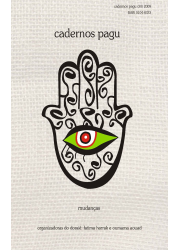Resumen
Estereótipos sobre as mulheres no Marrocos podem ser caracterizados como crenças culturais incompletas e inexatas mantidas por algumas pessoas e que se encontram inscritos em expressões lingüísticas ou em discursos subliminares. A cultura popular marroquina emprega representações poderosas para transmitir e sustentar tais estereótipos. Embora existam alguns estereótipos positivos, a maioria dos estereótipos sobre as mulheres no Marrocos é negativa e reflete ditames patriarcais subliminares que estruturam as relações de gênero nas culturas marroquinas. As mulheres marroquinas, no entanto, não são receptoras e transmissoras passivas, mas usam estratégias para lutar contra esses estereótipos.
Abstract
Stereotypes about women in Morocco may be characterized as incomplete and inaccurate cultural beliefs that some people hold about them and that are encoded in linguistic expressions as well as in underlying discourses. Popular Moroccan culture employs powerful representations to transmit and sustain these stereotypes. Although there are some positive stereotypes, most stereotypes about women in Morocco are negative and reflect the underlying patriarchal dictates that structure gender relations in Moroccan cultures. Moroccan women are not, however, passive recipients and carriers of stereotypes; they use strategies to fight back.
Key Words: Gender, Women, Stereotypes, Moroccan Culture
Citas
ARAT, Y. The Patriarchal Paradox: Women Politicians in Turkey.
Rutherford, N.J., Fairleigh Dickinson University Press, 1989.
BADRAN, M. Feminists, Islã and Nation: Gender and the Making of Modern Egypt. Princeton, Princeton University Press, 1995.
BELARBI, A. La Représentation de la Femme à Travers les Livres Scolaires, In: ALAHYANE, A. et alii. (eds.) Portraits de Femmes.
Casablanca, Le Fennec, 1987.
BOUKOUS, A. Société, Langues et Cultures au Maroc. Enjeux Symboliques. Rabat, Publications de la Faculté des Lettres et Sciences Humaines de Rabat. 1995.
COOKE, M. Blood into Ink: South Asian and Middle Eastern Women Write War. New York, Perseus Books, 1994.
EICKELMAN, D. Moroccan Islã: Tradition and Society in a Pilgrimage Center. Austin, University of Texas Press, 1976.
ENNAJI, M. (ed.) Berber Sociolinguistics. International Journal of the Sociology of Language, 132, New York, Mouton de Gruyter, 1997.
___________. Aspects of Multilingualism in the Maghreb. International Journal of the Sociology of Language, 87, 1991, pp.7-25.
ENNAJI, M. and F. SADIQI. Migration and Gender. The Impact of Migration on the Women Left Behind. Mohammedia, Imprimerie Fedala (to appear).
GEERTZ, C. Islã Observed: Religious Development in Morocco and Indonisia. Chicago, University of Chicago Press, 1971.
KANDIYOTI, D. (ed.) Women, Islã and the State: Women in the Political Economy. Philadelphia, Temple University Press, 1991.
KHATIBI, A. Maghreb Pluriel. Paris, Denoel, 1983.
LIPPMANN, W. Public Opinion. New York, Macmillan Company, 1922.
MERNISSI, F. Dreams of Trespass. Tales of a Harem Girlhood. Addison Wesley, 1994.
__________. Beyond the Veil: Male-female Dynamics in a Modern Muslim Society. New York, Schenkman Publishing Company, 1975.
SADIQI, F. Women, Gender and Language in Morocco. Boston and Leiden, Brill Academic Publishers, 2003.

